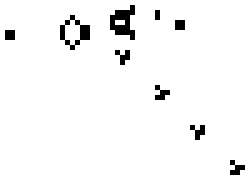In a lecture at the University of Edinburgh in the 1970s, artificial intelligence pioneer I.J. Good pointed out that a robot cricket player doesn’t necessarily need a complex knowledge of physics in order to catch a ball — instead it might emulate humans, who follow a simple rule: “If the ball appears to be rising in the sky, run backwards. If it is falling, run towards it.”
Similarly, Hope College mathematician Tim Pennings noticed that his Welsh corgi, Elvis, seemed to follow the optimal path when chasing a ball thrown into Lake Michigan — Elvis seemed to realize that he ran faster than he swam, and so could minimize his retrieval time by racing intelligently along the beach before jumping into the water. But how did he make these judgments?
“We confess that although he made good choices, Elvis does not know calculus,” Pennings wrote. “In fact, he has trouble differentiating even simple polynomials.”
(Timothy J. Pennings, “Do Dogs Know Calculus?” College Mathematics Journal 34:3 [2003], 178-182.)







